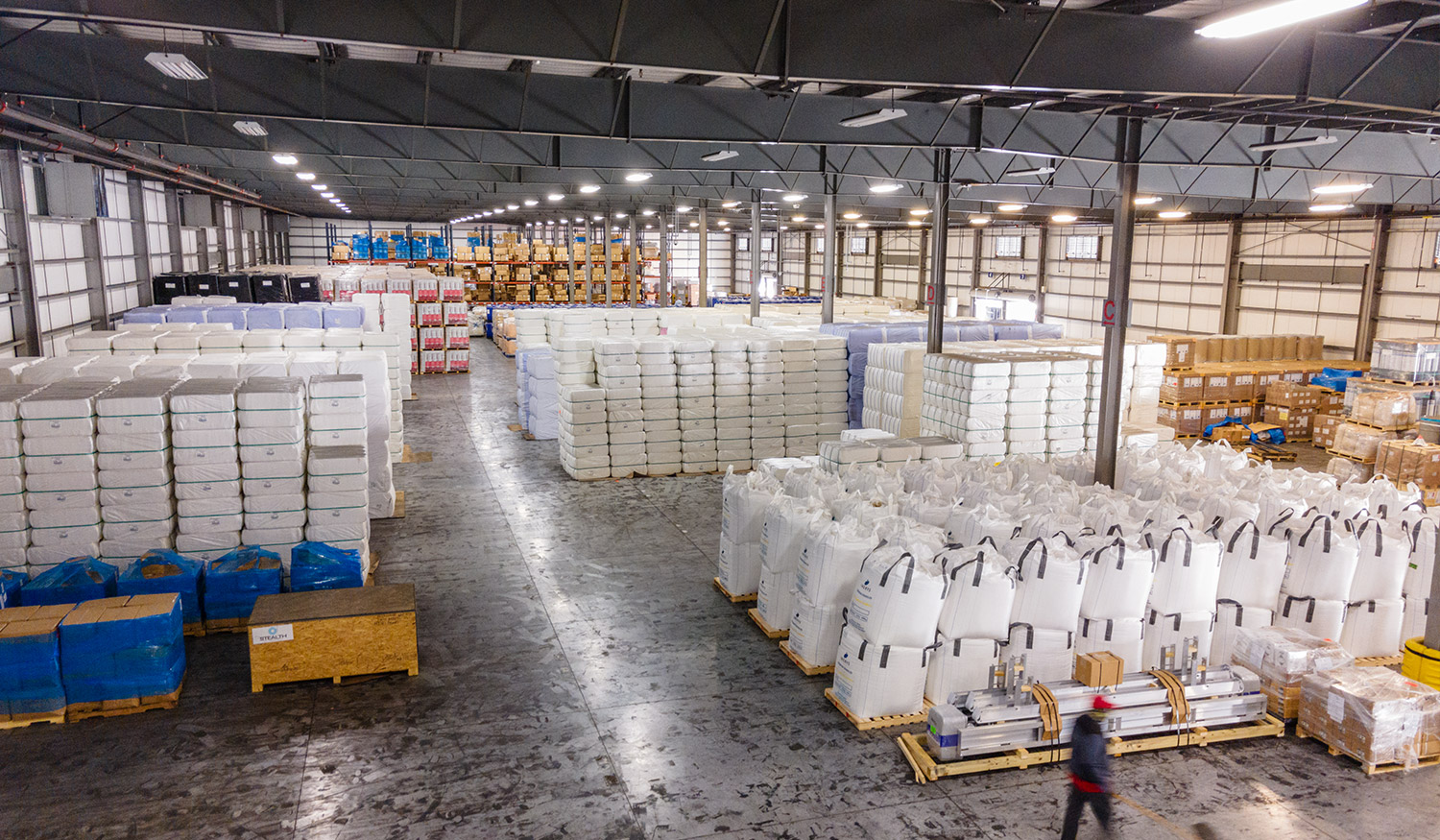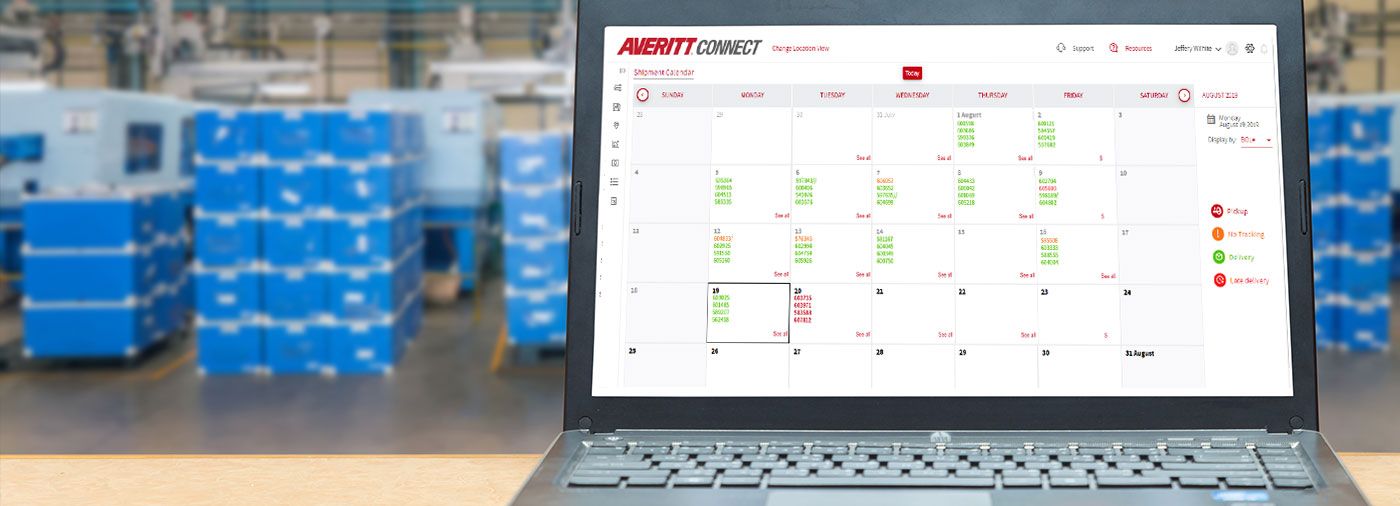The rising cost and decreased supply of fuel continue to pose a significant challenge for shippers and carriers alike. Ongoing concerns over inflation, foreign wars, and economic uncertainty have only exacerbated the problem, with the national average price of diesel fuel soaring past previous records. As of May 16, the U.S. Energy Information Administration reported an average increase of $2.37 over a year ago, with sections of the East Coast seeing hikes of $3 or more.
No one knows how long this situation will continue or just how high prices may ultimately get. In the meantime, there are several tactics shippers can implement to help manage their overall fuel costs.
Utilize Pool Distribution and Consolidation
The right distribution model makes all the difference in a supply chain. And pool distribution is a model companies have turned to for years. In fact, it’s become one of the most widely used shipping methods used by shippers worldwide.
As the name implies, pool distribution describes the process when freight from multiple sources in one area is “pooled” – then shipped out together to be delivered at various stops along the way. In essence, pool distribution combines multiple separate LTL shipments into one full truckload, eliminating multiple truck routes and consolidating them into one, fuel-efficient delivery.
Order consolidation – a practice where all orders received from a single customer or location are packed and shipped together – is another way to reduce shipping costs. It enables shipment companies to combine shipments from different suppliers into a single package, limiting total deliveries and making fulfillment more efficient. By using fewer packages for shipment, it minimizes packaging materials while also cutting down on fuel costs.
Consider Rail or Intermodal
Intermodal freight transportation – integrating rail and truck services to move products to market efficiently – has become an indispensable tool for companies looking to streamline transportation costs. Intermodal transportation utilizes the nation's rail network to transport cargo that would have otherwise moved entirely via truck. This allows shippers to reap the benefits of both – the fuel efficiency of rail and the transit freedom of trucks.
According to Inbound Logistics, rail can move one ton of freight almost 450 miles on a single gallon of fuel. And since drayage usually stays under 100 miles, one driver can complete multiple loads from the Intermodal ramp. Compared to a truckload-only solution where a driver may have over 2,000 miles between loads, this creates enormous fuel efficiencies and a substantially reduced carbon footprint.
Position Goods Closer to the Consumer
Strategically staging goods closer to the end customer is an obvious way to reduce fuel costs; fewer miles equal less diesel burned. Too often, businesses choose sites for a distribution center based on transitory factors such as tax abatements or inexpensive real estate. But those considerations are temporary – transporting goods to the consumer is a need that will forever be part of business. That’s why companies are increasingly turning to Micro Fulfillment Centers (MFCs) to help minimize these delivery distances and, as a result, their fuel costs.
Unlike traditional fulfillment hubs, which are often located in more remote locations, MFCs are closer to consumers in denser urban areas. This dramatically speeds up delivery times while reducing fuel consumption. Having fulfillment locations closer to customers also enables returns, refunds, and exchanges to be completed more quickly, reducing fuel use and carbon emissions while increasing customer satisfaction. Many micro fulfillment centers also function as dark stores, where customers can pick up their orders locally – eliminating the need for shipping altogether.
Use Technology to Optimize Your Route Planning
Efficient routing is another powerful way for shippers to manage their fuel expenses. By working with a carrier that employs a robust Transportation Management System (TMS) you can consolidate trips, map the best routes, avoid backtracking, and even bypass congested areas.
In addition to allowing fleets to plan more fuel-efficient routes, advanced navigation systems can identify preferred fuel stops along the way – delivering up-to-the-minute prices to help drivers find the least expensive diesel. These systems utilize GPS to provide dynamic, real-time routing solutions that help fleets cut fuel waste by reducing out-of-route miles.
If you’re not utilizing the latest technology to help optimize your fuel consumption, you’re missing a huge opportunity to significantly help your bottom line.
The Right Carrier Makes All the Difference
Even when fuel prices return to more historically "normal" levels, any of the above tactics will still help save your company money. And there are several additional approaches to consider. For instance, thanks to constantly improving technology, modern tractors provide dramatically better fuel economy than their older counterparts – in some cases delivering over twice the miles per gallon. So partnering with a carrier with newer equipment is another step you can take to reduce fuel costs. At Averitt, we maintain one of the most modern fleets in the industry – with 87% of our tractors being less than two years old.
We’re also proud to be a founding member of SmartWay – an EPA program that exists to reduce emissions while improving supply chain efficiency. In addition to the positive ecological effects, our commitment to sustainability has resulted in over 6.2 million gallons of diesel fuel being saved.
We use leading-edge software to plan the most efficient routes and alert our drivers to the most cost-effective fueling locations. We also maintain balance in our network to reduce empty miles. We equip our trucks with systems to automatically shut down idling engines, and we’re constantly finding new ways to improve aerodynamics – all of which help decrease our fuel use.
These are just a few of the reasons we continue to be recognized by industry-leading organizations like Inbound Logistics, the Tennessee Trucking Association and more for our creative fuel-saving solutions.
If you’d like to learn more about how your company can use fuel more efficiently throughout your supply chain, contact our experienced team today.













